Search Native Plants
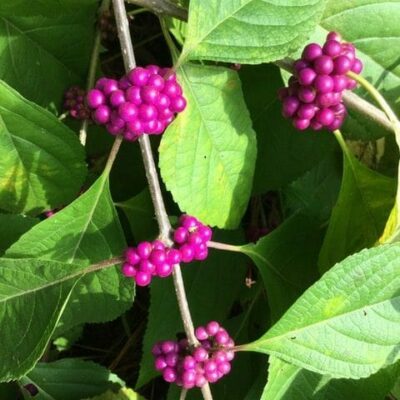
American beautyberry (Callicarpa americana)
- SCIENTIFIC NAME: Callicarpa americana
- PLANT TYPE: Shrub
- SCIENTIFIC NAME PRONUNCIATION: kah-lee-KAR-pah uh-meh-rick-AH-nuh
- TAGS: Plant Tags: American beautyberry. Plant Types: Shrub.
Cultural notes: Native Americans used the roots, leaves, and branches for a variety of medicinal purposes. Crushed leaves are purported to repel mosquitos.
read more
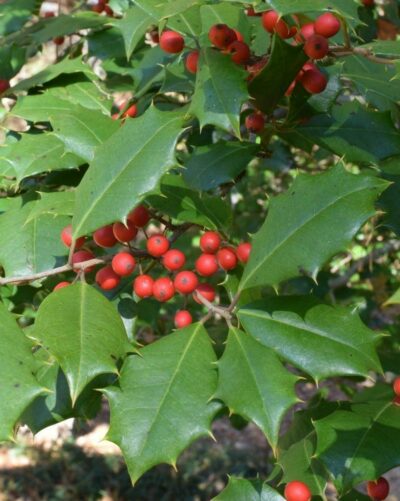
American Holly (Ilex opaca)
- SCIENTIFIC NAME: Ilex opaca
- PLANT TYPE: Tree
- SCIENTIFIC NAME PRONUNCIATION: EYE-lecks oh-PAK-uh
- TAGS: Plant Tags: dioecious and evergreen. Plant Types: Tree.
American Holly (Ilex opaca) grows best in sun but can withstand partial shade with moist, well-drained, acid soil; should be planted in an area protected from high wind; pruning should be done in winter, and it can withstand heavy pruning if branches are removed at their point of origin; susceptible to iron chlorosis in high pH soils. Nice pyramidal shape, with...
read more

American Snowbell (Styrax americanus)
- SCIENTIFIC NAME: Styrax americanus
- PLANT TYPE: Tree
- SCIENTIFIC NAME PRONUNCIATION: STY-raks a-mer-ih-KAY-nus
- TAGS: Plant Tags: fragrant, host plant, and specimen tree. Plant Types: Tree.
American Snowbell (Styrax americanus) grows in sun to part shade; prefers moist, acidic soil. This is a great specimen tree for small areas. Other Common Names: Storax, mock orange. Other Scientific Names: Styrax americanus var. pulverulentus, Styrax...
read more
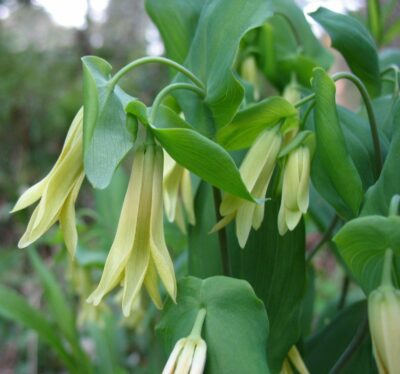
Bellwort (Uvularia perfoliata)
- SCIENTIFIC NAME: Uvularia perfoliata
- PLANT TYPE: Perennial
- SCIENTIFIC NAME PRONUNCIATION: oo-voo-LAR-ee-a per-foh-lee-AY-tuh
- TAGS: Plant Tags: bees. Plant Types: Perennial.
Merrybells (Uvularia perfoliata) grows in sun to part shade; average to organic soil; moderate to moist conditions; acid soils. Most likely to be confused with Uvularia grandiflora which has hairy leaves underneath and larger flowers, up to 2 inches long. According to the “doctrine of signatures” it was thought that the blossoms look like the uvula, or...
read more
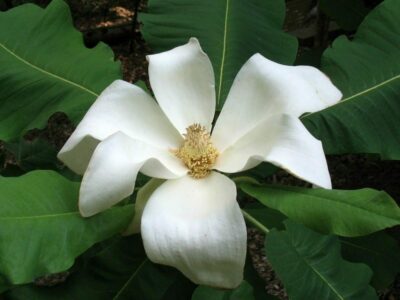
Bigleaf Magnolia (Magnolia macrophylla)
- SCIENTIFIC NAME: Magnolia macrophylla
- PLANT TYPE: Tree
- SCIENTIFIC NAME PRONUNCIATION: mag-NO-lee-uh mak-roh-FIL-uh
- TAGS: Plant Tags: deciduous, fragrant, and specimen tree. Plant Types: Tree.
Bigleaf Magnolia (Magnolia macrophylla) is best used in large landscape situations, not for smaller subdivision lots; performs best in loose, moist, well-drained, neutral to acidic soil; part sun to partial shade; protect from strong winds to avoid torn leaves, although some sources indicate success with plantings in full sun for a dramatic specimen tree (especially...
read more
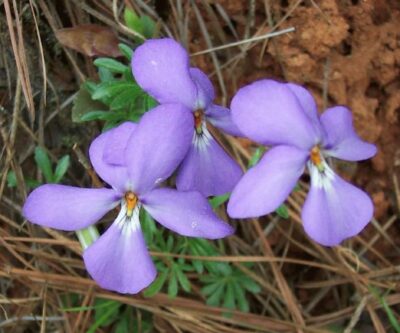
Birdfoot Violet (Viola pedata)
- SCIENTIFIC NAME: Viola pedata
- PLANT TYPE: Perennial
- SCIENTIFIC NAME PRONUNCIATION: vee-OH-luh ped-AH-tuh
- TAGS: Plant Tags: butterfly host and evergreen. Plant Types: Perennial.
Birdfoot Violet (Viola pedata) grows in full sun; does best in sandy or gravelly, dry, extremely well-drained soil; do not fertilize as it likes poor soil; requires no care once established; may self-seed in optimum conditions; crown will rot unless soil is very well drained; good plant for rock garden or edge of sunny, gravel path. Usually a small rosette of leaves...
read more
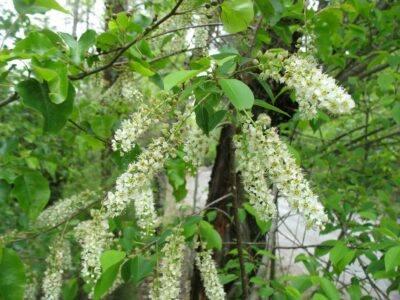
Black Cherry (Prunus serotina)
- SCIENTIFIC NAME: Prunus serotina
- PLANT TYPE: Tree
- SCIENTIFIC NAME PRONUNCIATION: PROO-nus say-ROTT-ih-nuh
- TAGS: Plant Tags: berries, butterfly, deciduous, pollinators, tree, and wood. Plant Types: Tree.
Wood is prized for furniture and fine woodworking. Plant parts are toxic, except for the fruit and inner bark, which is used to flavor cough syrup
read more
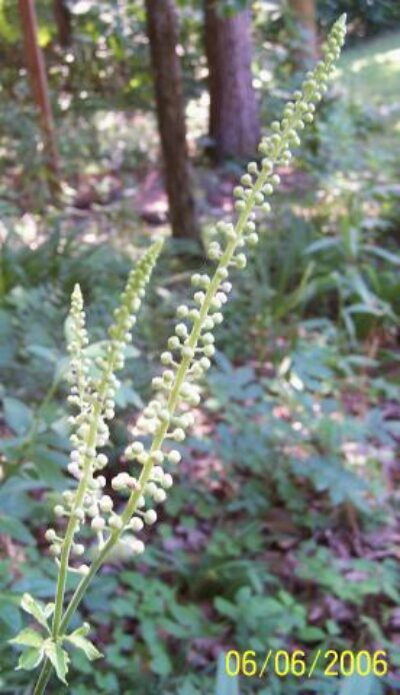
Black cohosh (Actaea racemosa)
- SCIENTIFIC NAME: Actaea racemosa
- PLANT TYPE: Perennial
- SCIENTIFIC NAME PRONUNCIATION: (ak-TEE-uh ray-see-MO-suh)
- TAGS: Plant Tags: pollinators and summer. Plant Types: Perennial.
Best grown in full to partial shade in a humus-y well-drained soil that is consistently moist; leaves will scorch if soil is allowed to dry out. Divided leaves provide interest, and tall flower spikes are showy, particularly against a dark background. Other Common Names: Black Bugbane, Black Snakeroot, Fairy Candles Other Scientific Names: Cimicifuga racemosa ...
read more
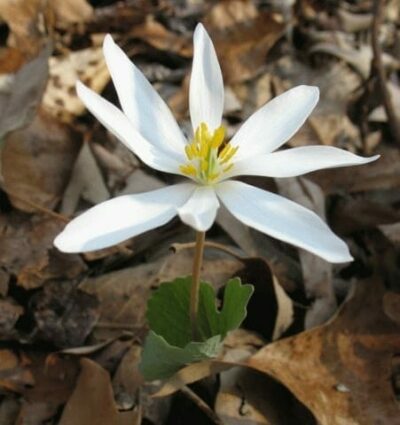
Bloodroot (Sanguinaria canadensis)
- SCIENTIFIC NAME: Sanguinaria canadensis
- PLANT TYPE: Perennial
- SCIENTIFIC NAME PRONUNCIATION: san-gwin-AR-ee-uh ka-na-DEN-sis
- TAGS: Plant Tags: spring ephemeral. Plant Types: Perennial.
Best grown in partial to full shade in humusy well-drained soil with medium moisture; much more dramatic when planted in masses and allowed to naturalize. Although the flowers are short-lived, the leaves are attractive and provide interest until they go dormant; the reddish-orange sap of the plant has been used as a dye. Other Common Names: Puccoon, Red Puccoon,...
read more
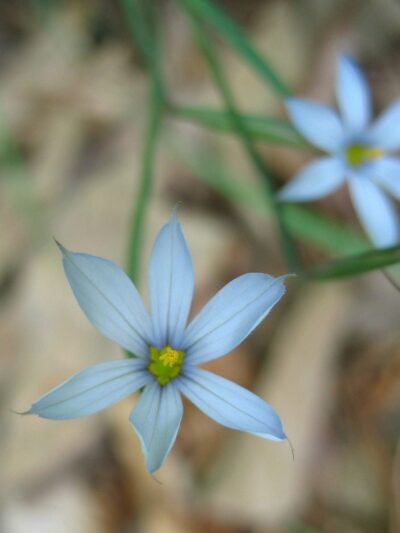
Blue-eyed Grass (Sisyrinchium angustifolium)
- SCIENTIFIC NAME: Sisyrinchium angustifolium
- PLANT TYPE: Perennial
- SCIENTIFIC NAME PRONUNCIATION: sis-ee-RINK-ee-um an-gus-tee-FOH-lee-um
- TAGS: Plant Tags: blue flower. Plant Types: Perennial.
Blue-eyed Grass (Sisyrinchium angustifolium) enjoys full sun and blooms best there; prefers medium-wet, well-drained soil; will readily self-seed if growing conditions are good; divide every 2-3 years to keep plants vigorous; best in naturalized areas, border edges, rock gardens, informal gardens. This plant is not a grass at all, but is a member of the Iris family...
read more

Blue-stem Goldenrod (Solidago caesia)
- SCIENTIFIC NAME: Blue-stem Goldenrod (Solidago caesia)
- PLANT TYPE: Perennial
- SCIENTIFIC NAME PRONUNCIATION: so-li-DAY-go KAY-see-uh
- TAGS: Plant Tags: bees, clumper, fall, and part shade. Plant Types: Perennial.
Blue-stem Goldenrod (Solidago caesia) is distinguished by a smooth, purplish-blue stem (more so with age) and flowers that are found in clusters along the top half of the stalk, creating small, graceful, arching sprays. This goldenrod is perfect for part shade areas and pairs well with Southern harebell (Campanula divaricata) which blooms around the same time. A...
read more
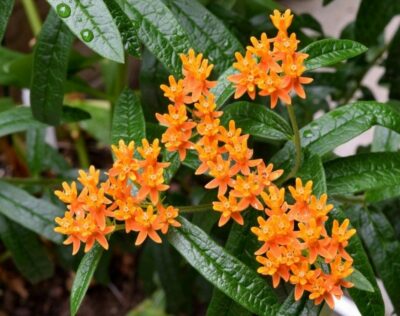
Butterfly milkweed (Asclepias tuberosa)
- SCIENTIFIC NAME: Asclepias tuberosa
- PLANT TYPE: Perennial
- SCIENTIFIC NAME PRONUNCIATION: (ass-KLE-pee-us tube-er-RO-suh)
- TAGS: Plant Tags: drought tolerant, host plant, milkweed, and monarch. Plant Types: Perennial.
Colorful and showy when in bloom, may rebloom later in summer. Drought tolerant when established. Monarch caterpillars may defoliate but leaves will grow back if early enough in the season.
read more
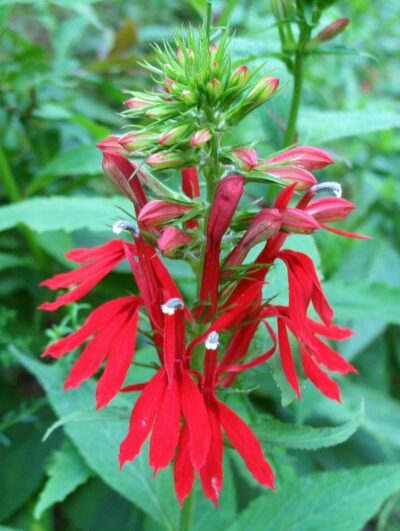
Cardinal Flower (Lobelia cardinalis)
- SCIENTIFIC NAME:
- PLANT TYPE: Perennial
- SCIENTIFIC NAME PRONUNCIATION:
- TAGS: Plant Tags: Hummingbirds, summer blooms, and wetland. Plant Types: Perennial.
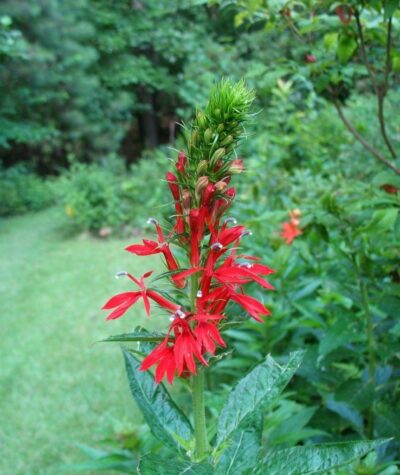
Cardinal flower (Lobelia cardinalis)
- SCIENTIFIC NAME: Cardinal flower (Lobelia cardinalis)
- PLANT TYPE: Perennial
- SCIENTIFIC NAME PRONUNCIATION: low-BEE-lee-uh kar-dih-NAL-iss
- TAGS: Plant Tags: butterflies, Hummingbirds, and wetland. Plant Types: Perennial.
Cardinal flower (Lobelia cardinalis) grows in full sun to partial shade; make sure that the basal rosette is not covered with leaves or other debris over the winter, as the plant depends on the winter sun and will decline and die if it cannot get it; not drought tolerant, but will tolerate average garden conditions. The showy red flowers attract and are pollinated...
read more
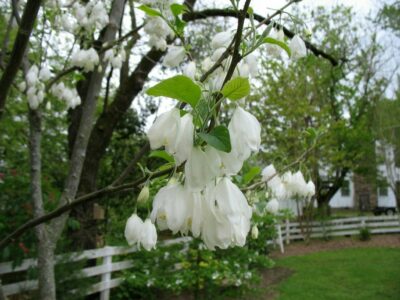
Carolina Silverbell (Halesia carolina)
- SCIENTIFIC NAME: Halesia carolina
- PLANT TYPE: Tree
- SCIENTIFIC NAME PRONUNCIATION: HAYLZ-ee-uh kair-oh-LY-nuh
- TAGS: Plant Tags: specimen tree. Plant Types: Tree.
Carolina Silverbell (Halesia carolina) grows in full sun to partial shade; needs more moisture in full sun; needs moist, acidic, well-drained soil that is high in organic material; is not tolerant of heat, drought, poor soil or alkaline pH. Nice yellow fall color; mid-spring blooms; pink variety available in nursery trade. Bark is distinctively although faintly...
read more
Page 1 of 7
